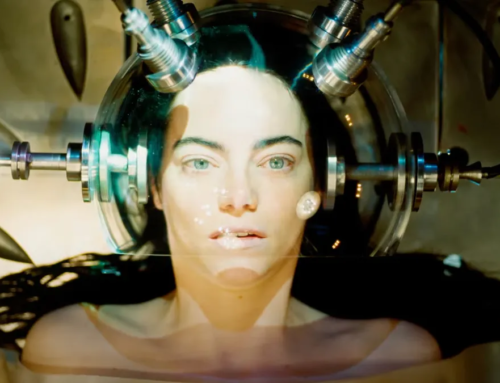Bibliografia
Adshead, G. (2000). Psychological therapies for post-traumatic stress disorder. The British Journal of Psychiatry, 177, 144-148.
American Psychiatric Association (2001). Diagnostic and statistical manual of mental disorders, Fourth editino, text revision. Washington, D.C. Trad. it. Manuale diagnostico e statistico dei disturbi mentali, 4a ed. rivista (DSM-IV-TR). Milano: Masson, 2002.
Andrews, G., Creamer, M., Crino, R., Hunt, C., Lampe, L. & Page, A. (2003). The Treatment of Anxiety Disorders. Clinician Guides and Patient Manuals – Second Edition. Cambridge: Cambridge University Press. Trad. it. Trattamento dei disturbi d’ansia. Guide per il clinico e Manuali per chi soffre del disturbo (pp. 447-487). Torino: Centro Scientifico Editore.
Ardino, V. (2006). Il disturbo post-traumatico da stress e le credenze cognitive centrali. In S. Sassaroli, R. Lorenzini & G.M. Ruggiero (a cura di), Psicoterapia cognitiva dell’ansia. Rimuginio, controllo ed evitamento (pp. 281-292). Milano: Raffaello Cortina Editore.
Baldwin, S.A., Williams, D.C. & Houts, A.C. (2005). Storia critica del DPTS. Cognitivismo Clinico, 2(2), 118-141.
Bisson, J. & Andrew, M. (2005, April). Psychological treatment of post-traumatic stress disorder (PTSD). Cochrane Database Syst Rev., 18(2), CD003388.
Bisson, J., Ehlers, A., Matthews, R., Pilling, S., Richards, D. & Turner, S. (2007). Psychological treatments for chronic post-traumatic stress disorder. The British Journal of Psychiatry, 190, 97-104.
Brunet, A., Weiss, D.S., Metzler, T.J., Best, S.R., Neylan, T.C., Rogers, C., Fagan, J. & Marmar, C.R. (2001, September). The Peritraumatic Distress Inventory: A Proposed Measure of PTSD Criterion A2. American Journal Psychiatry, 158, 1480-1485.
Buckely, T.C., Blanchard, E.B. & Neill, W.T. (2000, November). Information processing and PTSD: a review of the empirical literature. Clinical Psychological Review, 20(8), 1041-65.
Carlson, E.B. (2005). Un modello concettuale per gli effetti delle esperienze traumatiche. Cognitivismo Clinico, 2(2), 142-170.
Connor, K.M. & Butterfield, M.I. (2003). Posttraumatic Stress Disorder. Focus, 1, 247-262.
Davidson, J.R.T. (2002). Surviving disaster: what comes after the trauma? The British Journal of Psychiatry, 181, 366-368.
Dietrich, A. (2001, April). Risk factors in PTSD and related disorders: theoretical, treatment and research implication. Traumatology, 7(1), 23-50.
Dietrich, A., Baranowsky, A., Devich-Navarro, M., Gentry, J., Harris, C. & Figley, C. (2000, December). A review of alternative approaches to the treatment of post traumatic sequelae. Traumatology, 6(2).
Dubner, A.E. & Motta, R.W. (1999, June). Sexually and physically abused foster care children and posttraumatic stress disorder. Journal of Consulting and Clinical Psychology, 67(3), 367-373.
Ehlers, A. & Clark, D.M. (2000). A cognitive model of post-traumatic stress disorder. Behaviour Research and Therapy, 38, 319-345.
Ehlers, A. & Clark, D.M. (2003, May). Early psychological interventions for adult survivors of trauma: a review. javascript:AL_get(this, ‘jour’, ‘Biol Psychiatry.’); Biological Psychiatry, 1, 53(9), 817-26.
Foa, E.B. & Kozak, M. (1986). Emotional processing of fear: exposure to corrective information. Psychological Bulletin, 99, 20-35.
Foa, E.B. & Rauch, S.A. (2004). Cognitive changes during prolonged exposure versus prolonged exposure plus cognitive restructuring in female assault survivors with posttraumatic stress disorder. Journal of Consulting and Clinical Psychology, 72(5), 879-884.
Foa, E.B., Riggs, D., Massie, E. & Yarczower, M. (1995). The impact of fear activation and anger on the efficacy of exposure treatment for PTSD. Behavior Therapy, 26, 487-499.
Foa, E.B. & Rothbaum, B. (1998). Treating the trauma of rape: a cognitive-behavioral therapy for PTSD. New York: the Guilford Press.
Foa, E.B., Steketee, G. & Rothbaum, B.M. (1989). Behavioral-cognitive conceptualisations of post-traumatic stress disorder. Behavior Therapy, 20, 155-176.
Forbes, D., Phelps, A.J., McHugh, A.F., Debenham, P., Hopwood, M. & Creamer, M. (2003, October). Imagery rehearsal in the treatment of posttraumatic nightmares in Australian veterans with chronic combat-related PTSD: 12-month follow-up data. Journal of Trauma Stress, 16(5), 509-513.
Fullerton, C.S. & Ursano, R.J. (2001). Disturbo post-traumatico da stress. Le risposte acute e a lungo termine al trauma e al disastro. Torino: Centro Scientifico Editore.
Gidaro, E. & Oleari, A. (2003). Disturbo da stress post traumatico. In L. Isola & F. Mancini (a cura di), Psicoterapia cognitiva dell’infanzia e dell’adolescenza (pp.217-225). Milano: FrancoAngeli Editore.
Kira, I.A. (2001, June). Taxonomy of trauma and trauma assessment, Traumatology, 7(2), 73-86.
Krakow, B., Hollifield, M., Johnston, L., Koss, M., Schrader, R., Warner, T.D., Tandberg, D., Lauriello, J., McBride, L., Cutchen, L., Cheng, D., Emmons, S., Germain, A., Melendrez, D., Sandoval, D. & Prince H. (2001). Imagery Rehearsal Therapy for chronic nightmares in sexual assault survivors with Post-Traumatic Stress Disorder. JAMA, 286(5), 537-545.
Krakow, B., Johnston, L., Melendrez, D., Hollifield, M., Warner, T.D., Chavez-Kennedy, D. & Herlan, M.J. (2001, December). An open-label trial of evidence-based cognitive behavior therapy for nightmares and insomnia in crime victims with PTSD. American Journal Psychiatry, 158, 2043-47.
Lamprecht, F. & Sack, M. (2002). Posttraumatic Stress Disorder Revisited. Psychosomatic Medicine, 64, 222-237.
Lo Iacono, G. (2005). Introduzione alla psicoterapia del disturbo post-traumatico di stress / DPTS. Cognitivismo Clinico, 2(2), 171-194.
Marks, I., Lovell, K., Noshirvani, H., Livanou, M. & Thrasher, S. (1998). Treatment of Posttraumatic Stress Disorder by Exposure and/or Cognitive Restructuring. Archivies of General Psychiatry, 55, 317-325.
Mellman, T.A., Bustamante, V., Fins, A.I., Pigeon, W.R. & Nolan, B. (2002, October). REM Sleep and the Early Development of Posttraumatic Stress Disorder. American Journal Psychiatry, 159, 1696-1701.
Moore, B.A. & Krakow, B. (2007). Imagery Rehearsal Therapy for acute posttraumatic nightmares among combat soldiers in Iraq. American Journal Psychiatry, 164, 683-684.
Perkonigg, A., Pfister, H., Stein, M.B., Höfler, M., Lieb, R., Maercker, A. & Wittchen, H.U. (2005). Longitudinal Course of Posttraumatic Stress Disorder and Posttraumatic Stress Disorder Symptoms in a Community Sample of Adolescents and Young Adults. American Journal Psychiatry, 162, 1320-27.
Ranzato, L. (2005). Prefazione. Storia, teoria e psicoterapia del Disturbo Post-traumatico di Stress. Cognitivismo Clinico, 2(2), 115-117.
Rothbaum, B.O. & Schwartz, A.C. (2002). Exposure therapy for posttraumatic stress disorder. American Journal Psychotherapy, 56(1), 59-75.
Seligman, M. (1975). Helplessness: on depression, development and death. San Francisco: Freeman.
Shalev, A.Y. (2001). Acuto verso cronico: eziologia e fisiopatologia del DPTS – Un approccio psicobiologico. In C.S. Fullerton & R.J. Ursano, Disturbo post-traumatico da stress. Le risposte acute e a lungo termine al trauma e al disastro. Torino: Centro Scientifico Editore.
Sijbrandij, M., Olff, M., Reitsma, J.B., Carlier, I.V.E., de Vries, M.H. & Gersons, B.P.R. (2007). Treatment of Acute Posttraumatic Stress Disorder With Brief Cognitive Behavioral Therapy: A Randomized Controlled Trial. American Journal Psychotherapy,, 164, 82-90.
Solomon, E.P. & Heide, K.M. (2005, January). The biology of trauma: implications for treatment. Journal Interpersonal Violence, 20(1), 51-60.
Southwick, S.M., Yehuda, R. & Charney, D.S. (2001). Anomalie neurobiologiche nel DPTS: rassegna della letteratura clinica. In C.S. Fullerton & R.J. Ursano, Disturbo post-traumatico da stress. Le risposte acute e a lungo termine al trauma e al disastro. Torino: Centro Scientifico Editore.
Stapleton, J.A., Taylor, S. & Asmundson, G.J.G. (2007). Efficacy of various treatments for PTSD in battered women: case studies. Journal of Cognitive Psychotherapy: An International Quarterly, 21(1), 91-102.
True, W., Rice, J., Eisen, S., Heath, A., Goldberg, J., Lyons, M. & Nowak, J. (1993). A twin study of genetic and environmental contributions to the liability for posttraumatic stress symptoms. Archives of General Psychiatry, 50, 257-264.
Tucker, G. (2001, September). Controlling nightmares with Imagery Rehearsal Therapy. Journal Watch Psychiatry, 5.
Young, J., Ford, J., Ruzek, J., Friedman, M. & Gusman, F. (2002). L’assistenza psicologica nelle emergenze. Trento: Edizioni Erickson.
Yule, W. (2000). Il disturbo post-traumatico da stress: aspetti clinici e terapia. Milano: McGraw-Hill.
Dott.ssa Natascia Duca
Società Italiana di Psicologia e Psichiatria (SIPsi), Rimini e Fano
Specializzata SPC Ancona, Training C. Conti, R. Mosticoni, C. Perdighe
e-mail: natasciaduca@libero.it





